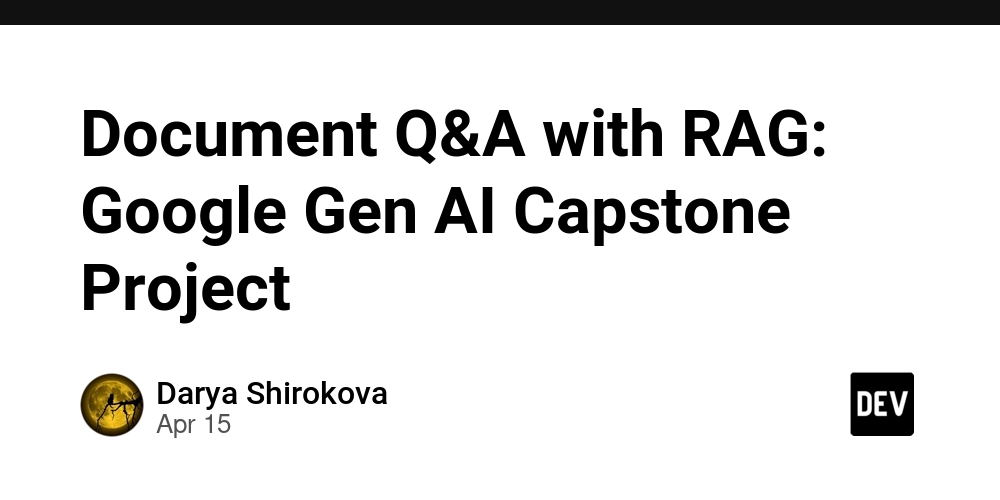Blog Draft Comprehensive Monetization Plan For Ai Technologies 20250417 232641
Blog Draft Comprehensive Monetization Plan For Ai Technologies 20250417 232641 Generated: 2025-04-17 23:26:41 Comprehensive Monetization Strategies for AI Technologies Table of Contents Target Audience Core Value Proposition Standard Monetization Streams Subscription Services Licensing Technology Data Monetization Creative Monetization Streams Freemium Models Partnerships with Educational Institutions Implementation Priorities Success Metrics Conclusion Target Audience The primary audience for AI technologies encompasses a variety of industries increasingly incorporating AI into their operations. Key segments include: Businesses in Need of AI Tools: Companies across healthcare, finance, retail, and manufacturing seeking machine learning, natural language processing, and data analytics for operational efficiency. IT Departments: These teams search for innovative software solutions that facilitate automation, data processing, and business intelligence. Educational Institutions: Schools and universities aspiring to integrate AI into their curricula and research projects. Startups: New entrants in the tech space aiming to leverage AI for unique applications and competitive advantages. Insights Industry Trends: The AI market is expected to grow significantly, with machine learning projected to reach $209.91 billion by 2028 (CAGR 39.2%), and NLP foreseen to reach $43.84 billion by 2025. This rapid growth presents opportunities for monetization across multiple sectors. Community Sentiment: While there is enthusiasm for AI advancements, mixed feelings concerning ethical implications indicate a need for transparency and engagement in messaging. Core Value Proposition At its core, the monetization strategy is built around the value that AI technologies provide in enhancing operational efficiency, reducing costs, and driving innovation. Key elements include: Access to Cutting-Edge Technology: Continuous updates and support through subscription models help businesses remain at the forefront of AI development. Scalable Solutions: Licensing technology allows companies to integrate advanced AI without the overhead of developing proprietary systems, accommodating varying levels of capability. Data-Driven Insights: Transforming large datasets into actionable strategies via analytics, helping businesses make informed decisions swiftly. Standard Monetization Streams Subscription Services Description: AI tools offered through subscriptions enable seamless updates and ongoing support for businesses. Rationale: As AI technology advances rapidly, businesses require consistent support and upgrades. Example: Adobe's transition to a subscription model with its Creative Cloud led to sustained revenue growth by opening scalable revenue streams. Implementation: Utilize Software-as-a-Service (SaaS) platforms for distribution, with tiered subscriptions tailored to different feature sets and usage patterns. Licensing Technology Description: Companies can license proprietary AI algorithms suited for integration into their own products or services. Rationale: Licensing provides a passive income stream and enhances the technological reach of the AI provider. Example: NVIDIA effectively monetizes its AI technology by licensing it to Original Equipment Manufacturers (OEMs), which capitalizes on diversified market needs. Implementation: Establish partnerships in sectors such as automotive and healthcare. Ensure licensing agreements are clear to facilitate straightforward commercial relationships. Data Monetization Description: AI can analyze vast datasets and derive actionable insights which can then be sold to businesses. Rationale: Companies increasingly seek data for strategic decision-making, presenting significant commercial opportunities. Example: Palantir has successfully monetized its ability to glean insights from large datasets across various industries, drawing in multiple revenue sources. Implementation: Focus on industries such as retail, healthcare, and finance that heavily rely on data, with pricing structures based on the complexity and quality of insights provided. Creative Monetization Streams Freemium Models Description: A freemium strategy allows customers access to basic features free-of-charge, enticing them to upgrade to premium features. Insights: Offering a low entry barrier can rapidly convert users into paying customers once they recognize the added value. Example: Slack effectively used a freemium model to build a large user base, subsequently converting a significant portion into paid users leveraging enhanced functionalities. Partnerships with Educational Institutions Description: Collaborate with universities and colleges for research projects, development sponsorships, and educational programs. Rationale: Partnering with educationa

Blog Draft Comprehensive Monetization Plan For Ai Technologies 20250417 232641
Generated: 2025-04-17 23:26:41
Comprehensive Monetization Strategies for AI Technologies
Table of Contents
- Target Audience
- Core Value Proposition
-
Standard Monetization Streams
- Subscription Services
- Licensing Technology
- Data Monetization
-
Creative Monetization Streams
- Freemium Models
- Partnerships with Educational Institutions
- Implementation Priorities
- Success Metrics
- Conclusion
Target Audience
The primary audience for AI technologies encompasses a variety of industries increasingly incorporating AI into their operations. Key segments include:
Businesses in Need of AI Tools: Companies across healthcare, finance, retail, and manufacturing seeking machine learning, natural language processing, and data analytics for operational efficiency.
IT Departments: These teams search for innovative software solutions that facilitate automation, data processing, and business intelligence.
Educational Institutions: Schools and universities aspiring to integrate AI into their curricula and research projects.
Startups: New entrants in the tech space aiming to leverage AI for unique applications and competitive advantages.
Insights
Industry Trends: The AI market is expected to grow significantly, with machine learning projected to reach $209.91 billion by 2028 (CAGR 39.2%), and NLP foreseen to reach $43.84 billion by 2025. This rapid growth presents opportunities for monetization across multiple sectors.
Community Sentiment: While there is enthusiasm for AI advancements, mixed feelings concerning ethical implications indicate a need for transparency and engagement in messaging.
Core Value Proposition
At its core, the monetization strategy is built around the value that AI technologies provide in enhancing operational efficiency, reducing costs, and driving innovation. Key elements include:
Access to Cutting-Edge Technology: Continuous updates and support through subscription models help businesses remain at the forefront of AI development.
Scalable Solutions: Licensing technology allows companies to integrate advanced AI without the overhead of developing proprietary systems, accommodating varying levels of capability.
Data-Driven Insights: Transforming large datasets into actionable strategies via analytics, helping businesses make informed decisions swiftly.
Standard Monetization Streams
Subscription Services
Description: AI tools offered through subscriptions enable seamless updates and ongoing support for businesses.
Rationale: As AI technology advances rapidly, businesses require consistent support and upgrades.
Example: Adobe's transition to a subscription model with its Creative Cloud led to sustained revenue growth by opening scalable revenue streams.
Implementation: Utilize Software-as-a-Service (SaaS) platforms for distribution, with tiered subscriptions tailored to different feature sets and usage patterns.
Licensing Technology
Description: Companies can license proprietary AI algorithms suited for integration into their own products or services.
Rationale: Licensing provides a passive income stream and enhances the technological reach of the AI provider.
Example: NVIDIA effectively monetizes its AI technology by licensing it to Original Equipment Manufacturers (OEMs), which capitalizes on diversified market needs.
Implementation: Establish partnerships in sectors such as automotive and healthcare. Ensure licensing agreements are clear to facilitate straightforward commercial relationships.
Data Monetization
Description: AI can analyze vast datasets and derive actionable insights which can then be sold to businesses.
Rationale: Companies increasingly seek data for strategic decision-making, presenting significant commercial opportunities.
Example: Palantir has successfully monetized its ability to glean insights from large datasets across various industries, drawing in multiple revenue sources.
Implementation: Focus on industries such as retail, healthcare, and finance that heavily rely on data, with pricing structures based on the complexity and quality of insights provided.
Creative Monetization Streams
Freemium Models
Description: A freemium strategy allows customers access to basic features free-of-charge, enticing them to upgrade to premium features.
Insights: Offering a low entry barrier can rapidly convert users into paying customers once they recognize the added value.
Example: Slack effectively used a freemium model to build a large user base, subsequently converting a significant portion into paid users leveraging enhanced functionalities.
Partnerships with Educational Institutions
Description: Collaborate with universities and colleges for research projects, development sponsorships, and educational programs.
Rationale: Partnering with educational institutions fosters innovation and nurtures a pipeline of new talent while enhancing brand reputation.
Example: Involving universities in AI research can lead to grants, funding opportunities, and the promotion of product offerings within academia.
Implementation Priorities
1. Market Testing (0-3 Months)
- Conduct surveys and focus groups to gather feedback on subscription pricing and discover key user features.
- Engage with potential partners to gauge interest in the technology licensing model.
2. Initial Offerings (4-6 Months)
- Launch the tiered subscription model featuring distinct access levels to AI tools based on user needs.
- Start marketing campaigns focusing on ethical AI applications, transparency, and resultant benefits.
3. Establishing Partnerships (6-12 Months)
- Form strategic alliances with educational institutions to drive collaborative projects that bridge theoretical and practical AI insights.
- Build relationships with industry professionals to create compelling use cases showcasing the effectiveness of licensed technologies.
4. Expansion and Diversification (1-2 Years)
- Analyze user feedback and technological advancements to expand product offerings.
- Stay abreast of market developments to integrate new monetization strategies based on data analytics and emerging business needs.
Success Metrics
To measure the effectiveness of these monetization strategies, consider the following key performance indicators (KPIs):
1. User Retention Rates
Monitor customer subscription renewals and engagement levels to track satisfaction. A targeted retention strategy can help identify areas that require immediate attention.
2. Revenue Growth
Evaluate both subscription and licensing revenues on a quarterly basis to measure the effectiveness of implemented monetization strategies.
3. Market Penetration
Keep tabs on the number of new users acquired through Freemium models and strategic partnerships to determine overall market reach and growth.
4. Customer Satisfaction
Employ Net Promoter Score (NPS) metrics to assess user feedback about tools and services, ensuring swift, responsive adjustments based on insights.
5. Partnership Outcomes
Measuring the return on investment (ROI) of partnerships with educational institutions can help gauge the success of collaborative research and funding opportunities.
Conclusion
This comprehensive monetization plan details actionable strategies tailored to capitalize on the growing AI market, addressing both standard and creative approaches. By understanding the target audience's nuances and focusing on ethical considerations, this initiative aims to build long-lasting relationships with stakeholders while driving sustainable revenue growth.
The blend of traditional subscription and licensing models with innovative freemium approaches and educational partnerships positions this plan for success in a rapidly evolving technological landscape. Embracing the outlined strategies will ensure sustained market relevance, increased user satisfaction, and enhanced revenue potential.









































































































































































![[The AI Show Episode 144]: ChatGPT’s New Memory, Shopify CEO’s Leaked “AI First” Memo, Google Cloud Next Releases, o3 and o4-mini Coming Soon & Llama 4’s Rocky Launch](https://www.marketingaiinstitute.com/hubfs/ep%20144%20cover.png)




























































































































![[DEALS] The All-in-One Microsoft Office Pro 2019 for Windows: Lifetime License + Windows 11 Pro Bundle (89% off) & Other Deals Up To 98% Off](https://www.javacodegeeks.com/wp-content/uploads/2012/12/jcg-logo.jpg)



























![Is this too much for a modular monolith system? [closed]](https://i.sstatic.net/pYL1nsfg.png)






















































































































_Andreas_Prott_Alamy.jpg?width=1280&auto=webp&quality=80&disable=upscale#)
































































































![What features do you get with Gemini Advanced? [April 2025]](https://i0.wp.com/9to5google.com/wp-content/uploads/sites/4/2024/02/gemini-advanced-cover.jpg?resize=1200%2C628&quality=82&strip=all&ssl=1)













![Apple Shares Official Trailer for 'Long Way Home' Starring Ewan McGregor and Charley Boorman [Video]](https://www.iclarified.com/images/news/97069/97069/97069-640.jpg)
![Apple Watch Series 10 Back On Sale for $299! [Lowest Price Ever]](https://www.iclarified.com/images/news/96657/96657/96657-640.jpg)
![EU Postpones Apple App Store Fines Amid Tariff Negotiations [Report]](https://www.iclarified.com/images/news/97068/97068/97068-640.jpg)
![Apple Slips to Fifth in China's Smartphone Market with 9% Decline [Report]](https://www.iclarified.com/images/news/97065/97065/97065-640.jpg)




































































































































